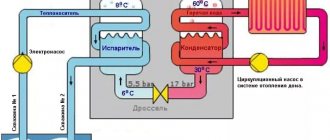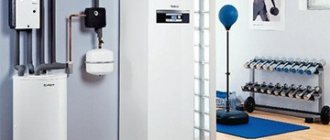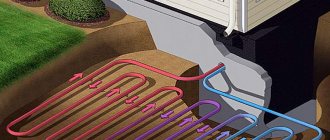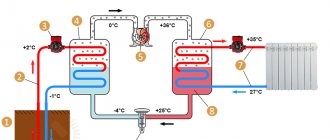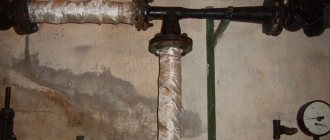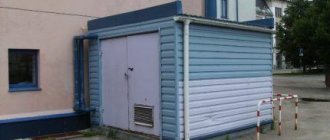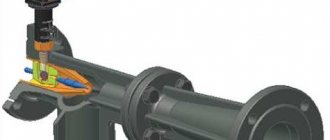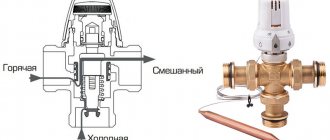The constant rise in energy prices is forcing country property owners to think about how to reduce heating costs. One option is to build an insulated house with minimal heat loss. The second step is to install a low temperature heating system. Third, heat the coolant with an air-to-water heat pump. At first glance, it seems that this is an unreasonably expensive solution, and an air source heat pump will not work efficiently in winter. Let's check if this is true using the example of FORUMHOUSE users who installed heat pumps in their house.
Renewable energy source
When energy bills start to rise, most of us wonder if there is an alternative.
Using renewable energy for heating is becoming a necessary step for homeowners, primarily because gas and electricity from fossil fuels are becoming increasingly expensive. Switching to green technologies such as (WHP) air-to-water heat pumps is often a no-brainer for those looking to cut bills and leave a smaller carbon footprint, but are they any good? As in any other business, it is important to take a balanced approach to the issue before purchasing, so let's look at the advantages and disadvantages of VTN.
Economics and ecology
When choosing heating pumps, also take into account environmental aspects, which are inseparable from the efficiency of the system. The less energy required, the cheaper it is and the less harmful it is to the environment. Each of us should take care of the environment.
Choosing a good pump starts with energy-efficient houses, because only if they are properly equipped is it worth investing in the project. If the equipment will be installed in an old house that is not class A, then you need to heat it first, and then talk to specialists about choosing a suitable scheme for the house.
It is dangerous to install the unit yourself. Proper installation requires special skills, so leave the job to professionals who can guarantee that everything from A to Z is done correctly. Self-installation is dangerous because there may be malfunctions, the elimination of which will be expensive. An incorrectly connected system will not last long, will quickly fail, and maintenance will require additional costs.
What is an air source heat pump?
Air-to-water heat pumps for heating a home are truly a stroke of genius. The question is, why, having such good characteristics, are air-to-water heat pumps not installed in every home?
The monoblock, about the size of a washing machine, fits harmoniously against the outside wall of your home and magically converts cold outside air into hot water and heating.
It is capable of transforming the negative temperature atmosphere and supplying hot water to the house for further use, and during the summer months it can work as an air conditioner. Often people use an air-to-water heat pump for a swimming pool to heat the pool water with it.
Installing an air-to-water heat pump takes only a couple of days, and they last up to 20 years. The devices require minimal maintenance and need to be cleaned once a year.
VTN is able to replace all the advantages of a traditional gas boiler, and it does this with minimal energy consumption, without harm to the environment. There is no need to buy fuel as it simply does not consume any.
Alternative option
You can use a heat pump as a heat source in the autumn-spring period, and in winter you can turn on heating from electricity, a gas or solid fuel boiler. This can significantly reduce the cost of heating a building.
Gas boiler coupled with a heat pump
The only negative is that you will have to spend money on purchasing additional heating devices. But if you consider everything in the long term, this option is more profitable.
Don't forget - in the comments you can leave your opinion or give advice. Don't forget to share the post on social networks!
Do you want to get help from a master, a specialist in this field? Go to the professional search portal. This is a completely free service where you will find a professional who will solve your problem. You do not pay for posting an ad, views, or choosing a contractor. If you are a master of your craft, then register on Pro and receive a flow of clients. Your profit is just one click away!
How does an air-to-water heat pump work?
The air heat converter runs on 75% renewable energy from the air and 25% from electricity. There are two main types of VTN:
- An air-to-water heat pump is a device in which heat is generated from the heat of the atmosphere for the coolant, and then supplied to traditional heating systems such as radiators and hydronic heated floors. Since underfloor heating operates at a lower temperature, around 35°C, it is considered an ideal system for heat pump operation.
- An air-to-air system generates a warm stream of air and then pumps it through fans that distribute the heat throughout the home.
Recommendations for system maintenance
The heating system using such heat pumps is automatically regulated and does not require constant monitoring. At the same time, seasonal and annual maintenance still needs to be carried out - this will help to timely detect points requiring repair. During maintenance you need to pay attention to several nuances:
- Filters must be cleaned regularly. If necessary, they must be changed immediately.
- It is important to control the temperature of the oil in the compressor - it must be warm.
- Do not allow the external unit to become dirty as this may reduce the performance and efficiency of the system. Temperature sensors should also be kept clean.
- The wiring braid must be intact, without traces of decay or creases.
- Hoses and pipes, including at joints, must not have leaks or defects.
- The moving parts of the external unit must be periodically lubricated - this eliminates jamming and reduces noise during operation.
Advantages and disadvantages
The use of air heat pumps for heating a private home is effective. At the same time, this heating option, of course, has advantages and disadvantages.
System advantages
- Air is a free, renewable resource that is available everywhere, so an air heat pump can be used everywhere - be it a densely populated city like Moscow or a suburban village.
- Air heat pumps can operate both as the main heating source and as an auxiliary heating source.
- To install the external circuit (block), there is no need to carry out excavation work or lay a tubular heat exchanger. This makes installation cheap and quick.
- The external unit does not take up much space. Therefore, such a system is suitable for installation even in small local areas.
- Low installation costs guarantee a quick payback for the heating system.
- The equipment corresponds to a high energy efficiency class (up to A++).
- The air heat pump control can be automated. Some models even allow remote control.
- Inverter heat pumps allow you to smoothly regulate compressor performance and reduce starting currents (to increase service life).
- The equipment is environmentally friendly. There is no need to burn fuel, there is no release of harmful substances, it is safe for the residents of the house.
- To install and use air-water heat pumps, you do not need to obtain a permit or other documents.
Disadvantages of the system
- Air heat pumps are dependent on the outside temperature. The colder it is outside, the lower the COP (if there is no temperature-compensating heating element).
- When placed outdoors, the external unit of the air heat pump is constantly exposed to temperatures, moisture, precipitation and other factors. Therefore, it wears out faster than the external heat exchanger of geothermal heat pumps.
- An outdoor heat exchanger unit requires periodic defrosting. It happens unpredictably. Often during defrosting the heating does not work.
Conclusion
An air-to-water heat pump is one of the effective and cost-effective ways to heat a home. To use this alternative heating source, you do not need complex installation, fuel, large garden areas or permits from special organizations. Of course, this heating option has disadvantages, but they are insignificant and are fully compensated by the efficiency, high efficiency and prospects for using the system.
Operating principle of an air-to-water heat pump
The principle of operation is quite simple. Energy is produced by sucking atmospheric air into an evaporator heat exchanger. The air is used to heat the freon gas, similar to how a refrigerator works, but in reverse. After freon has received low-grade heat from the air, the temperature of the refrigerant increases due to compression, which is carried out by the compressor. The compressed, now heated gas is condensed in an intermediate heat exchanger called a condenser. After which the accumulated heat is transferred to the coolant of the heating system.
Types of equipment by design type
Air heat pumps are:
- monoblock (all components are located in one housing);
- split systems (the device is divided into two blocks - external and internal, which directly interacts with the home heating system).
In turn, monoblock ones have versions with:
- internal installation;
- external installation.
Split systems are:
- with an intermediate heat exchange circuit;
- with a split circuit filled with refrigerant.
Monoblock heat pumps
Monoblock heat pumps with internal installation imply installation of equipment indoors. The advantage of this option is the protection of equipment from destructive external factors, including precipitation and weather. The disadvantage of this installation option is that it is necessary to provide large openings in the wall of the room where the unit will be installed for sufficient air flow. Monoblocks with external (external) installation are more often used when there is no room for a boiler room in the house. Placing all elements in one heat pump housing outside the house has the advantage of reducing noise levels. In addition, in this case there is no need to make air supply channels in the walls. The disadvantages are obvious:
- outdoor placement may lead to freezing of the system in case of inactivity;
- The street block must be insulated and protected from precipitation.
Split systems
Split air heating systems, which have a separate refrigerant circuit, are somewhat similar to household air conditioners. Main advantages:
- simple installation;
- there is no risk of the system freezing, since the main unit is located in the house;
- in the boiler room you don’t need a lot of space for the indoor unit (it is compact, since some of the equipment is located outside);
- The noise source is installed outside the house.
There are several disadvantages of split systems with a separate circuit:
- the need to insulate the pipeline connecting the external and internal blocks;
- strict requirements for the distance of placement of the external unit (the closer, the better, since there is less travel heat loss);
- forced intervention in the working fluid circuit.
Systems with an intermediate heat exchanger provide for the installation of an additional heat exchange circuit that heats the incoming air or maintains the temperature of the refrigerant. This design makes the heat pumps universal and reduces the risk of freezing. The main disadvantage of this equipment is that additional costs are required for installing an additional circuit.
Air source heat pump efficiency
VHPs are effective both in winter and summer, thanks to the COP (conversion coefficient). The COP of a heat pump is a way of measuring its efficiency by comparing the power input required to produce heat with the amount of heat output.
The COP is adjusted based on the time of year. To be able to compare heat pumps based on how much they are affected by these changes, seasonal COP (Seasonal Coefficient of Performance) is used.
The VHP receives energy from the surrounding air, but as the ambient temperature decreases, the efficiency also decreases.
Power and efficiency
If for geothermal and water heat pumps the efficiency practically does not depend on the time of year, then with air heat pumps the situation is different. Performance directly depends on the outside air temperature; the colder it is, the lower the COP (efficiency).
Many people believe that the power of a heat pump determines how much heat it can produce, but this is not true. It characterizes energy consumption, and the amount of heat received depends on the efficiency. Accordingly, it depends on the air temperature outside the house.
VTN for cold climates
It is important to know the thermal load of the object and the characteristics of the heat converter; the higher the required supply temperature to the home heating system, the lower the final COP will be.
Even though efficiency may be reduced, this does not mean that HHPs do not work in cold weather. It is known that they can extract heat from air at temperatures down to -25°C, and with an additional source, such as an electric boiler, etc. HHPs work even in the cold climate of Siberia.
But to get the most out of it, you need to make sure your home is well insulated.
Geothermal heating for supermarket
One of the most actively growing and promising areas for the use of heat pumps is the segment of small and medium-sized commercial facilities with difficult access to central heating networks and high electricity tariffs.
In the fall of 2022, our partners implemented a project to convert a supermarket building in the Perm region to geothermal heating using Thermex Energy equipment. The initial parameters of the object: a building with an area of 1000 m² made of sandwich panels with insulation, internal heating system - heated floors. The heat loss of the building at a design temperature of −35°C is 35 kW.
A heating system based on a Thermex Energy Pr-35 geothermal heat pump was installed at the facility. Due to the high temperature of the coolant at the inlet of the heat pump evaporator and the low required air temperature in the room (15°C), a high COP value of up to 6.1 is immediately achieved at this facility.
Photo 5. Heat exchanger for collecting heat from wastewater
Which air-to-water heat pump should you choose?
The higher the COP, the better.
For example, an air-to-water inverter heat pump operates at COP 4 when the outdoor temperature is 0°C and the supply temperature is 35°C. This means that the efficiency of the air-to-water heat pump is 400%. That is, for every kW/h of electrical energy consumed by the fans and compressor, 4 kW/h of heat is generated.
Converting the school building to geothermal heating
At the end of 2022, we implemented a landmark project to transfer a secondary school in the village of Zhitkovo, Vyborg district, Leningrad region, to heating based on geothermal heat pumps. The Zhitkovsk school became the first educational institution in the region equipped with a geothermal heating system.
Before the project was implemented, a brick school building built in 1965 with a total area of 1150 m² (photo 2) located far from the central networks was heated by electric convectors installed in each room. The estimated heat loss of the building is 112 kW. Annual heating costs averaged about 3.5 million rubles (electricity at the tariff for legal entities) and were a key cost item for maintaining the building. To reduce operating costs and improve the safety of the system for students and teachers, it was decided to convert the school to geothermal heating. The complex project included the installation of a geothermal circuit, installation of a heating unit based on Thermex Energy geothermal heat pumps and installation of an internal radiator heating system. All work was completed in less than two months (November - December) without stopping the educational process.
The source of low-potential thermal energy for the facility is the geothermal circuit - 14 wells of 145 m each were drilled in the area adjacent to the school building, into which geothermal probes were inserted (HDPE pipe with a diameter of 40 mm with a U-shaped tip). 14 probes are combined into a single geothermal well, where a collector with rotameters and shut-off valves is installed. The connection between the geocollector and the heating unit inside the building is made of HDPE pipes with a diameter of 90 mm. We used propylene glycol, which is safe for humans and the environment, as a coolant in the geocircuit. Due to the geological features of the facility’s location (flooded granites), stable heat removal is guaranteed all year round. In January 2022, propylene glycol evaporator inlet temperatures averaged between -1.0 and +0.7°C.
The thermal unit (photo 3) included the following main elements: a cascade based on three Thermex Energy Pr-35 geothermal heat pumps, an auxiliary electric boiler with a capacity of 21 kW, a buffer tank with a volume of 1000 liters, as well as pumping equipment. The total thermal power of the heat pump installation when operating on a radiator heating system is 112 kW (at B0/W55, that is, at a coolant temperature in the geothermal circuit at the evaporator inlet of 0°C and a coolant temperature in the heating system circuit at the condenser outlet +55°C ).
Photo 3. Cascade heat pump installation at the Zhitkovskaya Secondary School
Thermex Energy Pr- two-compressor geothermal heat pumps are designed for independence and cost-effectiveness in matters of heat supply to large residential and commercial buildings with limited access to central communications. The lineup includes nine models with power from 12 to 56 kW with the ability to cascade up to 16 units. The Pr- series has expanded built-in functionality: heating (control of two independent heating circuits), hot water heating (two modes - constantly and only at night), passive cooling (air conditioning), pool heating, weather-dependent regulation, control of a second heat source, thermal disinfection of the boiler .
The basic package includes two modern scroll compressors, heat exchangers with an increased area, full factory electrical preparation, a built-in RCD, a two-stage blocking system when the load is exceeded, two built-in protections against low quality power supply, five built-in thermal installation protections, a Russian-language controller with a graphic display. In the mobile application, you can monitor and configure key operating parameters of several heat pumps installed at different sites.
More than 100 low-temperature radiators (with an increased heat exchange area), equipped with thermal heads for room-by-room regulation, were installed as an internal heating system in the school building. System temperature chart 55/45°C.
The key factors in deciding in favor of geothermal heating in most cases are economic feasibility, that is, future savings on heating payments and payback periods for the initial investment, as well as reliability, ease of operation of the system and safety.
A set of technical and software solutions implemented in Thermex Energy Pro heat pumps allows us to achieve high levels of operational efficiency and fault tolerance at this facility:
1. Weather-compensated control as standard. Varying the heating water flow temperature depending on the outside temperature, combined with the use of a logarithmic relationship to calculate the heating circuit flow temperature, provides an efficiency increase of up to 6% compared to weather-compensated and linear heat pumps and up to 30% compared to heat pumps , which do not have weather-dependent regulation.
2. Step power control. A cascade of three two-compressor heat pumps provides six power levels for the entire installation. The load is distributed evenly in the cascade, taking into account the total operating time of each compressor: the second stage in the heat pump is turned on only if at least one compressor is turned on in the other heat pumps. This ensures, firstly, a more energy-efficient operating mode at partial load and more accurate maintenance of temperature parameters without “overheating” and, secondly, increased fault tolerance and reliability of the system.
3. Cutting off the inoperative freon circuit. Thermex Energy Pr-35 geothermal heat pumps have two independent refrigeration circuits. When only one of them is activated, the second is cut off by a solenoid valve, which helps prevent bifurcation of the flow before heating and further mixing of warm and cold flows. All this allows you to reduce equipment energy consumption by at least 12.5% at partial loads.
4. Control of the second heat source. This feature of Thermex Energy heat pumps made it possible to include an auxiliary 21 kW electric boiler in the scheme as a seventh power stage to cover the peak heat losses of the school building during the coldest periods. This solution made it possible, without any noticeable loss in efficiency and economy, to reduce the capital costs of installing a geothermal heating system by 30% compared to the option when all the necessary thermal power is covered by heat pumps. Thus, according to calculations, the total consumption of thermal energy at the facility for the year will be approximately 344 MWh, of which the electric boiler will account for only 2.3 MWh, that is, only 0.7%.
As a result of the project, annual school heating costs will be reduced by 70–75%. According to preliminary calculations, the value of the seasonal SCOP efficiency indicator at this facility will be approximately 3.7. An additional advantage is the high level of automation of the heat pump installation and the possibility of remote diagnostics, which eliminates the need for regular maintenance of the system.
Thanks to the above-described advantages and results, the project of converting a socially significant facility to geothermal heating attracted public attention and was widely covered in the federal and regional media, which indicates a growing interest in energy-efficient solutions and contributes to the general popularization of the technology.
Photo 4. Test bench at the production site of Thermex Energy LLC
Advantages of VTN
Unlike a gas boiler, an air source heat pump does not produce carbon when operating. Although they consume electricity, VHPs can be combined with solar photovoltaic panels to produce clean electricity.
For the home, air-to-water heat pumps have low operating costs, especially compared to fuels such as propane, diesel or direct electric heating.
About Thermex Energy
Thermex Energy is a Russian manufacturer of heat pumps created taking into account the characteristics of the Russian market and climate. The company is part of the Thermex Corporation and relies on 70 years of experience in the development and production of advanced thermal equipment and energy-saving products. The assembly of heat pumps is carried out in the city of Tosno, Leningrad Region - the main production site of Termex in Russia.
The Thermex Energy team has more than ten years of experience in implementing complex heat supply projects for residential, commercial and industrial facilities using heat pumps. The production team includes members of the WorldSkills national team in the “Refrigeration and Air Conditioning Systems” competency.
The production capacity of serial models of geothermal heat pumps with a heating capacity from 6 to 56 kW is up to 700 units per year. Individual development of high-power industrial heat pump units is possible. In 2021, it is planned to launch our own line of air source heat pumps, buffer tanks and indirect water heaters for heat pumps, as well as a line of low and medium power chillers. In 2020, the Thermex Energy Compact series of geothermal heat pumps was recognized as the best energy-efficient heat pump produced in Russia according to the World of Climate and Cold 2020 competition, and in 2021 the company became the winner of the Aquatherm Moscow Awards competition in the Energy Efficiency and Energy Saving category. .
Impact of VTN on the environment.
In addition to the financial benefits of installing a HVAC system, upgrading your HVAC system has a number of positive environmental impacts.
High conversion efficiency means you'll use less fuel to heat or cool your home. This means that power plants produce less energy from fossil fuels such as coal and oil, reducing the amount of greenhouse gases and other pollutants released into the atmosphere.
You can further reduce your carbon footprint by switching all your energy consumption from fossil fuels to solar energy. Installing solar panels on your roof allows you to power your VHP system (and your entire home) with free electricity with zero CO2 emissions.
Installation cost
Installation and commissioning work is carried out at different prices, depending on the scope of work, the equipment and machinery used, volumes and other factors. An equally important circumstance is the general economic situation in the region and the state of the purchasing power of the population.
In any case, the cost of installing and launching the system will require approximately 20% of the total cost of the equipment , which will significantly affect the user’s wallet.
The high cost of installation work often becomes the reason for installing and launching the system yourself, which makes minor repairs and maintenance possible without the involvement of specialists. However, one must keep in mind that many companies refuse warranty or service if the installation was carried out by strangers.
